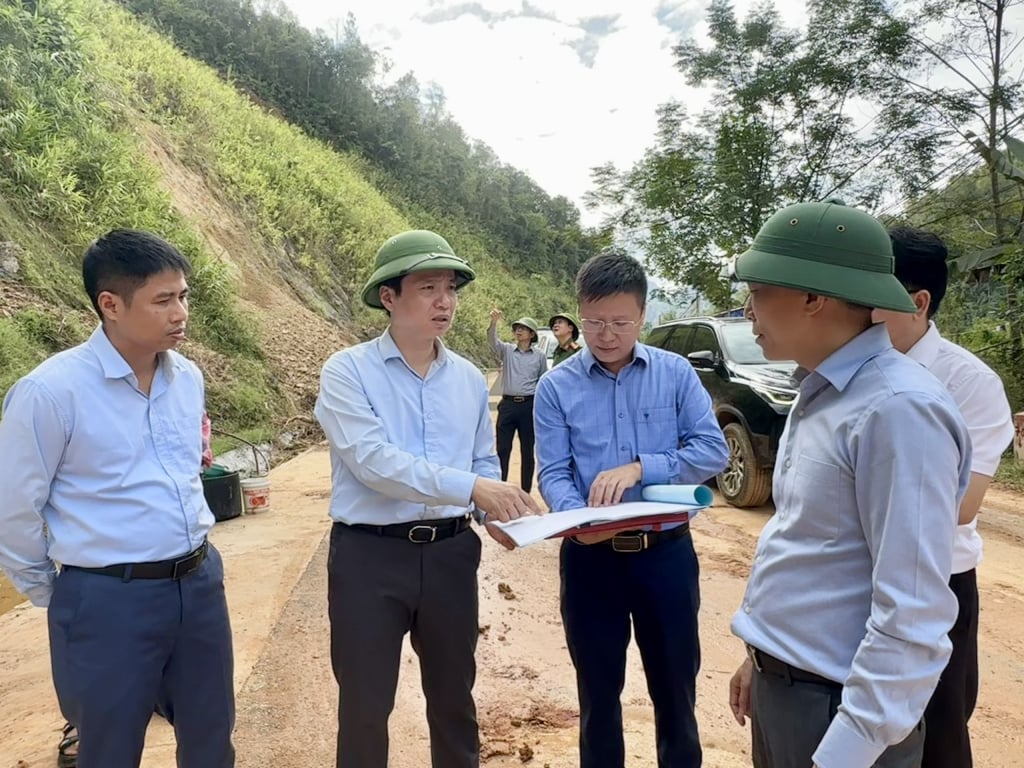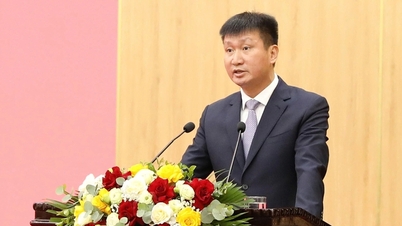
Since July 1, implementing the direction of the Provincial Party Secretary and the Provincial Party Standing Committee on the need for a real-time disbursement monitoring system, the province has initiated the work of building a public investment management platform. From the initial idea, choosing the approach, finding an experienced unit, designing the data structure to organizing a trial run in a number of key projects - everything has been done in accordance with the direction. However, the overall progress is still slower than the actual demand. Data updates are not regular and not complete; trial runs are still unclear; many monitoring steps still rely on manual synthesis; the information process is still mechanical and depends heavily on paper documents, phone calls and meetings. Meanwhile, the disbursement progress of many projects is still sluggish, making it difficult to immediately clarify the cause of each bottleneck. Looking deeper into reality, we can see that despite having the right policies and great determination, when the provincial leaders do not have a complete, accurate and updated picture on a daily basis, management is still mainly based on situational response. A section of the route was reported as "basically handed over" but there are still many households that have not been cleared; the Treasury's files were returned many times but the reason was late; the construction progress was recorded as 80% but the on-site photos did not reflect it correctly. These shortcomings show that the province needs a real data system, flowing through a single window, to serve as the foundation for timely and targeted direction.
System goal: see once - understand immediately - handle the right bottleneck
A public investment tracking system is only truly valuable if it helps leaders clearly see the core elements: progress, obstacles and responsibilities. This requires data to be standardized and continuously updated. Each project must have an “original plan” for comparison; have expected progress by month, by week; have field images and accurate location; have a log of each submission, receipt and return of documents; have a report on construction volume for each item. The status of site clearance must be shown for each household, each plot - not just stopping at a general rate. The bidding process must clearly show each step: issuance, closing, appraisal, approval. Treasury records must fully record the time of submission, time of processing and reason for return. All design adjustments, estimates, and volume changes must be fully updated.
To centralize information, the system needs two ways to receive data: One is, technically qualified units send data directly for the system to update automatically; Two is, other units send data files in tabular form - a simple and easy-to-apply method.
The important thing is not the method of each unit, but that the data must be accurate, complete and timely. Then, the provincial leaders can immediately answer three key questions: where is the project behind? Why is it behind? Which unit must handle it?
Early warning - task assignment - processing deadline: creating discipline for progress
An effective system must not only display data but also detect abnormalities earlier than traditional reports. Warning thresholds must therefore be clear: monthly disbursement does not reach the minimum level, construction is two weeks behind schedule, Treasury files are returned many times, there are many points on the site that have not been handed over... all must be automatically marked by the system. After the warning comes action. The system must create a "work ticket", clearly assign it to the responsible unit, clearly state the work to be done and the deadline for completion. The implementation time must be unified: three days to complete the file, five days to explain, seven to ten days to handle the site problems. When the deadline is overdue, the system changes the status to "overdue" and displays it to the leader. Thanks to that, responsibilities are clearly defined. There is no room for pushing, ambiguity or prolonged delays. Contractors must also be evaluated by clear criteria: the level of human resource and equipment mobilization, actual progress, the number of projects behind schedule, and the number of warnings. When evaluating based on real data, the selection or adjustment of contractors becomes more objective, reducing emotional debate. In particular, the system must form a "single operating screen" for provincial leaders. Here, all important data is centralized: daily progress of each project, site map to each household, file processing log, contractor mobilization level, red - yellow warnings, overdue work orders. Thanks to that, leaders can grasp the entire route in just a few minutes, without having to wait for reports from many departments and branches.
The biggest barrier: fear of “information exposure” and the true spirit of digital transformation
The results of the recent trial run show that the biggest obstacle is not in the technology or software, but in the psychology of the participating units. Many places are not ready to update the real progress because they are afraid of being compared; some are afraid when the number of returned documents is clearly displayed; some units do not want to publicly display the contractor's mobilization status; some officials are worried that detailed data will cause delays to the public and superiors. The fear of "exposing information" has invisibly become an obstacle that prevents the system from operating smoothly as required. But if the data is dishonest, incomplete and does not arrive on time, all solutions are just formalities. Digital transformation in public investment does not mean transferring paper reports to computers, nor changing the presentation format. This is a process of renewing thinking and working methods, requiring more transparency, more initiative, more responsibility and based on real data, not on emotions. It requires overcoming long-term inertia, overcoming the habit of working quarterly, overcoming the fear of being evaluated based on real results. When each unit dares to update correct data, dares to face real progress, dares to take clear responsibility and dares to innovate, the system will exert its power. When warnings are handled in a timely manner and work orders are completed on time, the flow of public investment capital will be smoother, more timely and serve people's lives better. This is the core spirit that digital transformation aims for: management based on real data, faster decisions and higher efficiency.
Source: https://baocaobang.vn/du-lieu-that-chia-khoa-pha-vong-luan-quan-trong-cham-giai-ngan-dau-tu-cong-3182200.html





































































































![Dong Nai OCOP transition: [Article 3] Linking tourism with OCOP product consumption](https://vphoto.vietnam.vn/thumb/402x226/vietnam/resource/IMAGE/2025/11/10/1762739199309_1324-2740-7_n-162543_981.jpeg)








Comment (0)